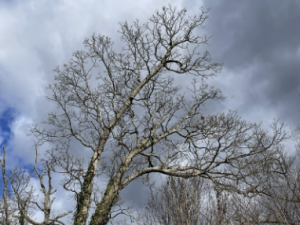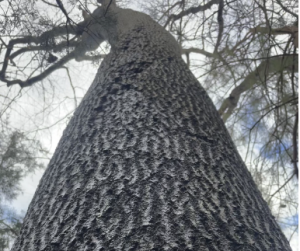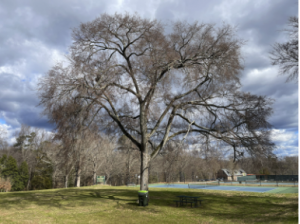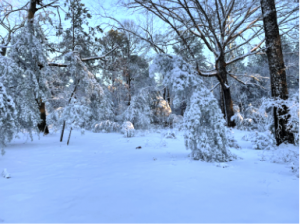
I love to look at trees in the winter. Every time I am out walking, riding, and driving this time of year I am drawn to the shapes of individual trees and contours of the hillsides in the woods.
I wish I had some good pictures of tree forms and shapes I could pull up on my phone, yet there are only thousands in my head. But even if I find a snapshot I’ve taken of an amazing tree, it’s hard to see the beauty I remember.

Not having to compete with leaves, the bark of a tree stands out in the wintertime more than any other season. Believe it or not, the tree below is an American Beech tree “without” smooth bark. I found this beauty on a property along the James River in a thick grouping of other trees. If you look closely at the smooth bark of most beech trees, you can actually see this pattern in the bark.

Another reason I love this time of year is that it’s easy to identify a tree 50-100 yards away just by looking at the tree’s form and growth patterns. Most tree species are very predictable and can be identified by shape, so when you see something out of the ordinary it catches your eye. Below is an elm tree in the field at Forest Hill Park. I can tell by the swollen buds and the shape of the tree… I did not get close to determining the exact variety of elm, but I would guess winged elm.

There was a chestnut oak tree outside my dining room window that I would stare at every winter and dream of climbing. It was flowing with seemingly entirely curved limbs throughout. The trunk looked as though it were in constant motion as if it were a roller coaster. In a big storm a few years ago, the tree sadly fell over. Seeing the tree on the ground, walking on and around it, I wasn’t able to discern the unique shape that I had admired for so many years.
When I am out in the woods during the summer, spring, and early fall, a lot of the time there is too much foliage to see all of the shapes of the land and its contours. It’s hard to see the hills, ridges, and valleys. If you are viewing a map on google you can select contours (terrain) which shows you a little bit of variation but you need to find a good topographic map or website (Here is a great one of the City of Richmond, zoom in for details) and it will give you a sense of how steep the land is or what’s on the other side of a hill.

This winter while biking along the Buttermilk Trail, I realized how close the railroad tracks and Riverside Drive were to me and how that little strip of land that has been preserved as a park is really not so wide. But in the summertime, I feel secluded and like I’m in a much bigger forest.

One sure way I’ve found to get the most out of cold winter days is to admire all the beauty that’s hidden 9-months out of the year! You can do this by:
- Going outside and taking a walk
- Getting some fresh air and sunshine and looking around.
- Look for those trees with distinctive features and growth patterns.
- Look for that hidden tree through the woods.
- Look at the hidden contours in the land and see what’s just over that hill.
Have an amazing winter!



